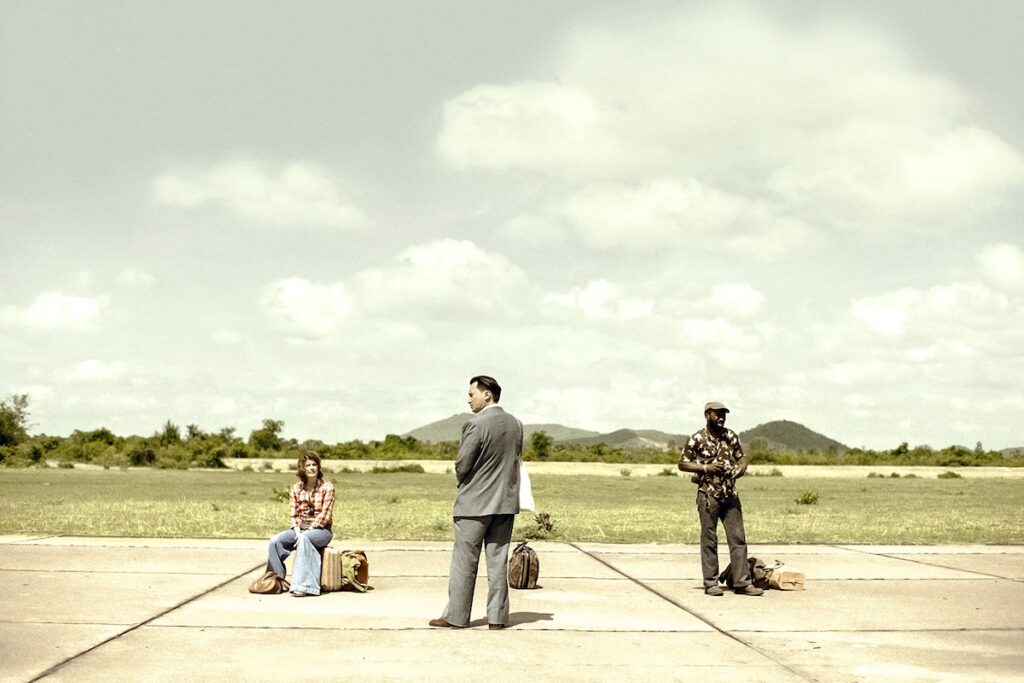‘Meeting with Pol Pot’ Brings Together Fact, Fiction, and Figurines for a Look at Cambodia’s Khmer Rouge
Director Rithy Panh includes elements culled from years of research as well as from his own experiences as an adolescent interned at Khmer Rouge ‘rehabilitation’ camps.

The new film “Meeting with Pol Pot” centers on three imagined French visitors to Democratic Kampuchea, the name for Cambodia during the savage communist regime of the Khmer Rouge in the late 1970s. Its narrative, though, is not entirely fictional, considering it is “freely inspired” by American journalist Elizabeth Becker’s book, “When the War Was Over: Cambodia and the Khmer Rouge Revolution,” written after she traveled to the country in 1978 along with another journalist and a Scottish writer of Marxist beliefs.
Director Rithy Panh sticks to the basic outline of Ms. Becker’s account, even as he includes elements culled from years of research as well as from his own experiences as an adolescent interned at Khmer Rouge “rehabilitation” camps. These elaborations call to mind his Oscar-nominated 2013 documentary/personal essay, “The Missing Picture,” which featured black-and-white historical footage, color photography, and, uniquely, motionless clay figurines to recreate the director’s childhood memories before the fall of Phnom Penh and the devastation reaped afterward.
Opening Friday at Lincoln Center, “Meeting with Pol Pot” also employs archival clips and small clay figures, though most of its runtime involves location shooting with real actors. Mr. Panh’s re-use of static “claymation” may have viewers wondering if budget issues limited the live-action scope of the picture, but he cannily justifies the application of the technique again when his main characters tour a propaganda artist’s studio and peer at a miniature diorama showing idealized life under collectivization.
Small-scale models representing the French and Cambodian actors and their surroundings reinforce how the characters are but bit players in the Khmer Rouge’s grand scheme of social engineering.

The director mirrors the three guests of the repressive government in Ms. Becker’s book: there’s female journalist Lise Delbo, photojournalist Paul Thomas, and a devotee of communism, Alain Cariou. The other principal character, in addition to Pol Pot himself, is the trio’s liaison, Comrade Sung, who denies knowing Cariou despite the Frenchman maintaining they had met each other while studying at the Sorbonne.
Somewhere in Cambodia, with road signs painted over blank, the three are shuttled in a white Cadillac or another vehicle to various locations meant to demonstrate the new regime’s success. Yet most of what they encounter are almost absurdist tableaux, such as a humble bedroom where the supreme leader rests “when he has time to sleep,” and a utopian rural collective whose rice bags contain dirt. These Potemkin villages soon grow tiresome to the group, and one day the photojournalist shakes the military escorts and delves further into the jungle, finding death and devastation.
With its focus on journalists in Cambodia, the film reminds one of “The Killing Fields,” the 1984 Ronald Joffé feature that won three Academy Awards. But Mr. Panh is not interested in big emotions and epic cinematography, though he does come up with some indelible images in addition to his clay creations, such as footage of labor camp workers playing on an undulating mosquito bed net, or shots of dying children interposed with hands over a camera lens. As in the earlier movie, the Western world’s condescending and often muddled relationship with the East also comes under scrutiny, with the trio’s pursuit of the truth placing Cambodians in danger — when they’re not leading directly to executions.
Irène Jacob (“The Double Life of Veronique,” “Red”) brings both a toughness and a subtle sense of irony to the part of Delbo, and it’s great to see her getting a lead role in a film after appearing in several TV series in the last decade. Through her eyes, we see how communism’s notions of brotherhood and justice are improbable, ignorant, and smug. These traits, though, are mostly absent in party partisan Cariou, portrayed elegantly by Grégoire Colin (“Beau Travail”), despite the character’s vague academic air and armchair revolutionary reasoning. One sequence in particular featuring Cariou, some soldiers, and an elephant puppet exposes how the Khmer Rouge was not his friend and hated anything intellectual.
As Thomas, Cyril Gueï displays the most indignation of the three foreigners — at how their tour of the countryside is a tightly stage-managed farce, and at how they’re being lied to — and his compelling performance crystallizes the drama’s anger. In a curious casting alignment, the current secretary of state of the Cambodian foreign affairs ministry, Bunhok Lim, embodies guide/spokesman/translator Sung, with the real-life statesman’s acting proving polished.
When Cariou and Delbo finally get to meet Pol Pot, it’s Mr. Panh who plays him, though the supreme leader is only heard and seen in shadow — an apt metaphor for both the role of a director and for a secretive dictator who denied ordering atrocities. If ultimately the film’s narrative is lackadaisical and its editing occasionally abrupt and inconsequential, its nightmarish mood never falters.

